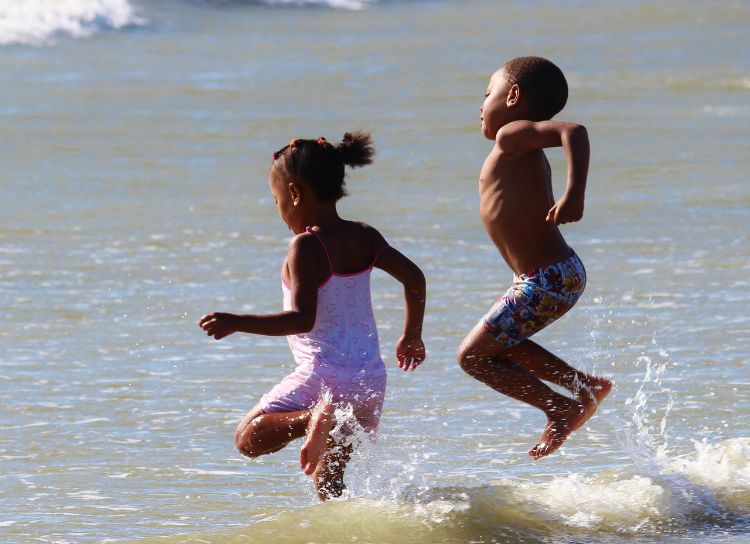Summer spike: Children’s injuries surge in warm months—but most are preventable
Sun, fun and a trip to the ER? Learn more about how to keep kids safe in the summer.

Summer brings sunshine, freedom—and a surprising surge in childhood injuries.
Between May and August, more than 40% of children’s injury-related emergency room (ER) visits occur. Hospitals also report a 15–27% increase in overall ER volume during summer months, according to a Kaiser Permanente study. Fortunately, more than 90% of these injuries are preventable with simple precautions.
Michigan State University Extension shares the top five causes of summer injuries—and how parents and caregivers can help children stay safe.
Falls: The leading cause of injury
Falls are the top reason children end up in the emergency room, making up nearly 30% of pediatric trauma cases (NCBI). Playground equipment, decks, stairs and even household furniture are common culprits. Research also shows that 80% of fatal pediatric trauma cases happen during spring and summer (ResearchGate).
Safety tips:
- Choose playgrounds with mulch or rubber surfacing, rather than concrete.
- Make sure play structures are age-appropriate.
- Repair or avoid loose railings and high surfaces inside and outside the home.
Bike and scooter injuries
More than 200,000 children were treated in 2023 for injuries related to bikes, scooters, skateboards and similar equipment (BenchMark Physical Therapy). While scrapes and bruises are common, head injuries are the most serious—and also the most preventable.
Proper helmet use can reduce the risk of brain injury by up to 85%, according to the American Academy of Pediatrics.
Safety tips:
- Require a helmet for every ride, every time.
- Make sure bikes and helmets are correctly sized and fitted.
- Teach kids to follow traffic rules and signal when riding near roads.
Motor vehicles and heat
Cars, golf carts and ATVs all carry risks. One of the biggest concerns is car seat misuse—more than 80% are used incorrectly, according to Safe Kids Worldwide. Summer also brings a spike in vehicular heatstroke deaths from children left inside hot cars.
Safety tips:
- Use the NHTSA car seat inspection locator to find a certified technician.
- Never leave a child unattended in a vehicle, even for a moment.
- Supervise kids using ATVs and always require helmets and age-appropriate equipment.
Burns from grills, fires and fireworks
Each day, hundreds of children are treated for burn injuries, particularly in summer, according to the Centers for Disease Control and Prevention (CDC). The most common cause in young children is scalds from hot liquids, while older kids more often suffer burns from direct flame or fireworks.
Safety tips:
- Keep hot drinks and cooking tools out of small children’s reach.
- Establish “kid-free zones” around grills, fire pits and campfires.
- Never allow children to handle fireworks—including sparklers.
Drowning: Fast, silent and preventable
Drowning is the leading cause of injury death for children ages 1–4 and the second leading cause for children 5–14, according to the CDC. For every child who dies from drowning, seven more require emergency care, and nearly half of those are hospitalized.
Safety tips:
- Supervise children around any water—pools, lakes, bathtubs or even buckets.
- Stay within arm’s reach of young swimmers and non-swimmers.
- Enroll kids in swim lessons and ensure supervising adults know CPR
Other common summer hazards
- Trampolines account for more than 100,000 injuries annually, especially in children ages 5–14 (AAP).
- Sports and recreational activities were responsible for 3.7 million ER visits in 2023, according to the National Safety Council.
Summer should be a time for adventure and joy—not emergency room visits. With a little planning, supervision and the right safety gear, most injuries can be prevented.
For more information, visit:



 Print
Print Email
Email

